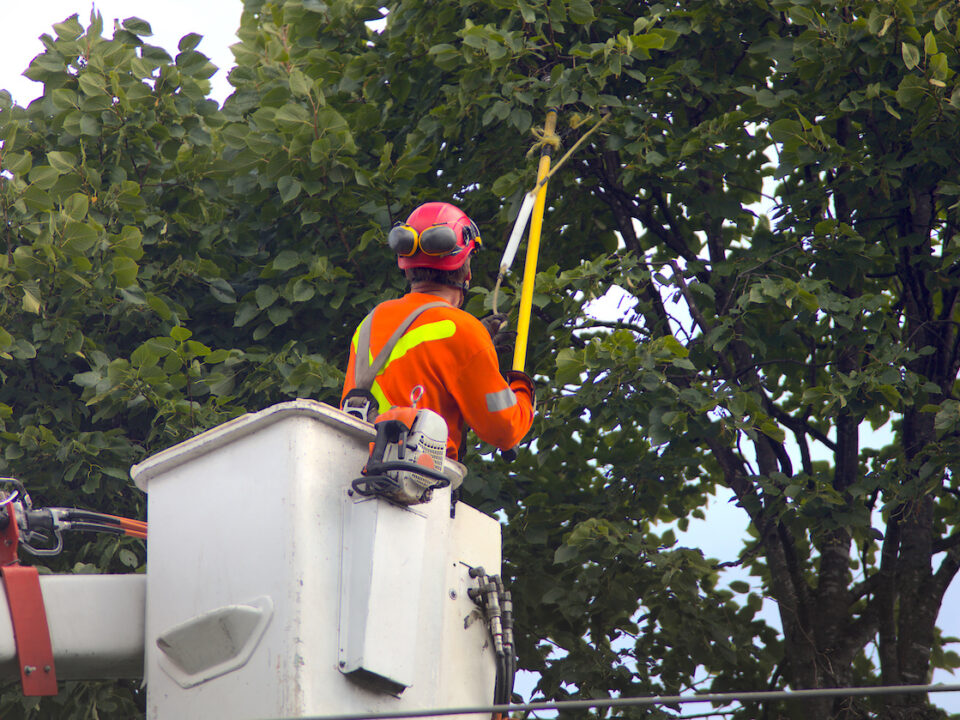The manchineel tree (Hippomane mancinella) is a species of flowering plant in the spurge family (Euphorbiaceae). Its native range stretches from tropical southern North America to northern South America. The name “manchineel” (sometimes spelled “manchioneel” or “manchineal”), as well as the specific epithet mancinella, is from Spanish manzanilla (“little apple”), from the superficial resemblance of its fruit and leaves to those of an apple tree.
A present-day Spanish name is, “little apple of death”. This refers to the fact that manchineel is one of the most toxic trees in the world: the tree has milky-white sap which contains numerous toxins and can cause blistering. The sap is present in every part of the tree: the bark, the leaves, and the fruit.
And, it lives right here in Florida.
Where Can You Find The Manchineel Tree?
The manchineel tree can be found on coastal beaches and in brackish swamps, where it grows among mangroves.
It provides excellent natural windbreaks and its roots stabilize the sand, thus retarding beach erosion.
Spanish explorer Juan Ponce de León died shortly after an injury incurred in battle with the Calusa in Florida—being struck by an arrow that had been poisoned with manchineel sap. Despite the inherent dangers associated with handling it, the tree has been used as a source of wood by Caribbean furniture makers for centuries.
A gum can be produced from the bark which reportedly treats edema, while the dried fruits have been used as a diuretic. The manchineel tree is listed as an endangered species in Florida.
How to Recognize the Tree
Hippomane mancinella, the evergreen manchineel tree, grows up to 15 metres (49 ft) tall. It has reddish-greyish bark, small greenish-yellow flowers, and shiny green leaves.
Spikes of small greenish flowers are followed by fruits, which are similar in appearance to an apple, are green or greenish-yellow when ripe. The fruit is poisonous, as is every other part of the tree. All parts of the tree contain strong toxins. Its milky white sap contains phorbol and other skin irritants, producing strong allergic contact dermatitis.
What is The Risk of Exposure
The sap has also been known to damage the paint on cars. Burning the tree may cause ocular injuries if the smoke reaches the eyes. Contact with its milky sap (latex) produces bullous dermatitis, acute keratoconjunctivitis and possibly large corneal epithelial defects. Although the fruit is potentially fatal if eaten, no such occurrences have been reported in the modern literature.
When ingested, the fruit is reportedly “pleasantly sweet” at first, with a subsequent strange peppery feeling … gradually progress[ing] to a burning, tearing sensation and tightness of the throat.
Symptoms continue to worsen until the patient can barely swallow solid food because of the excruciating pain and the feeling of a huge obstructing pharyngeal lump.
In some parts of its range, many trees carry a warning sign – for example on Curaçao – while others are marked with a red “X” on the trunk to indicate danger.
Although the plant is toxic to many birds and other animals, the black-spined iguana is known to eat the fruit and even live among the limbs of the tree.
The Mangeneel Apple has the smell and appearance of an English Apple, but small, grow on large trees, generally along the Seashore.
One apple is sufficient to kill 20 people. This poison is of such a malignant nature that a single drop of rain or dew that falls from the tree upon your skin will immediately raise a blister. Neither Fruit or Wood is of any use, that I can learn.
What to Do If You Find a Manchineel Tree
First, avoid contact with the tree at all costs. Even just a slight exposure to the sap can cause awful results.
Never eat fruit from the ground near the tree.
Make sure to call in a professional to mark the tree and remove it right away. Call us here at Warner Tree Service and we will come to inspect the suspected tree and come up with a plan to get it off your property safely.




